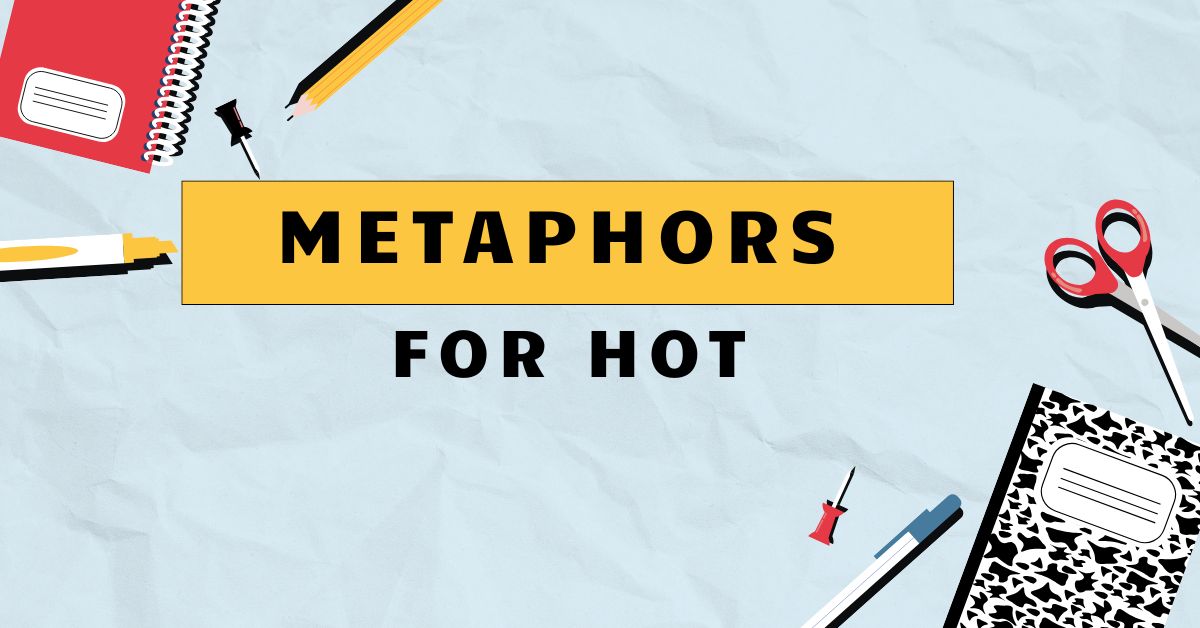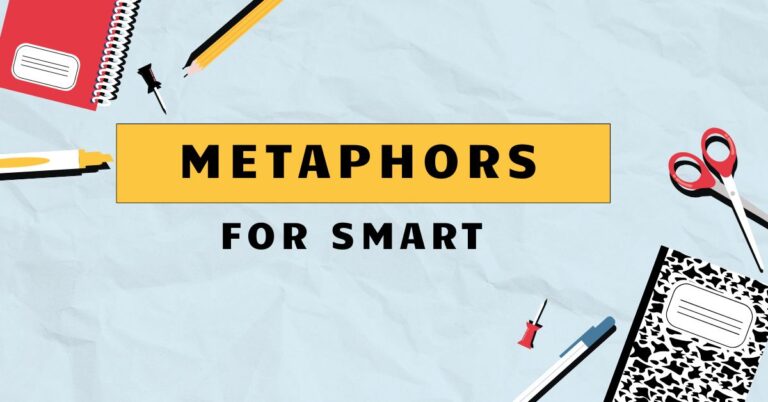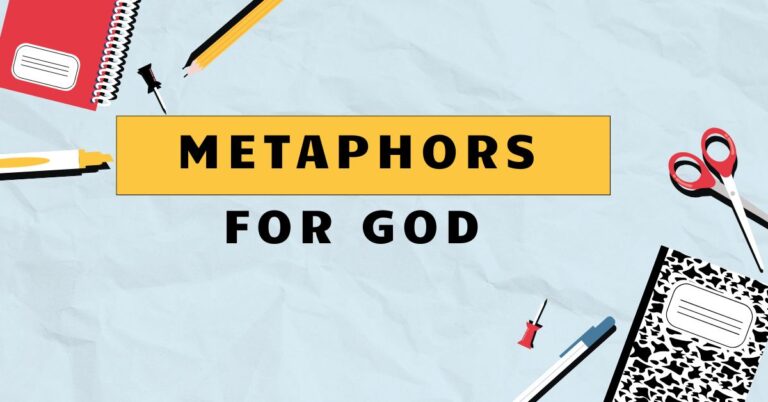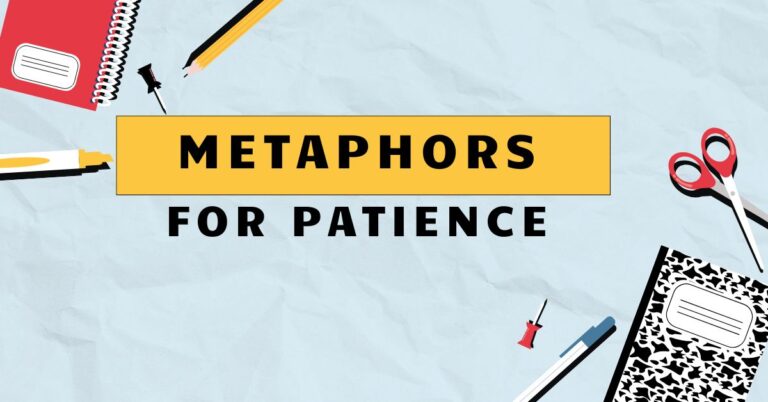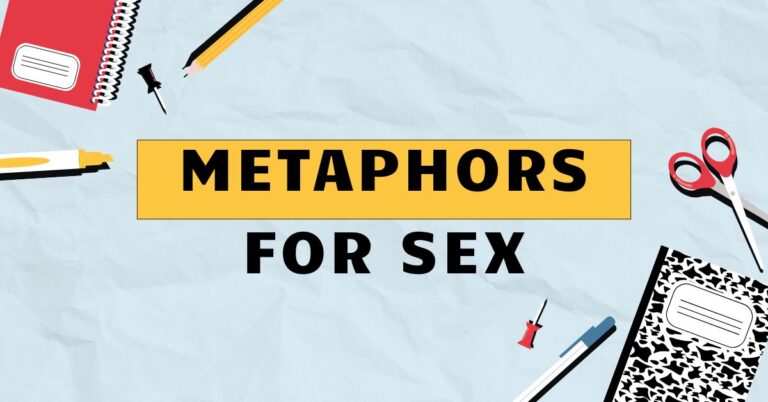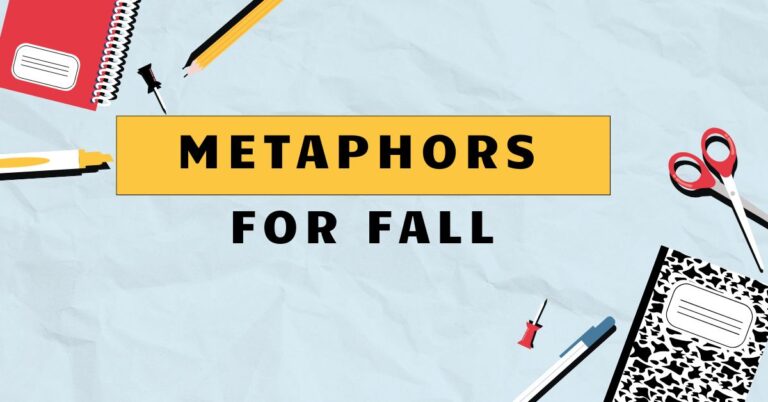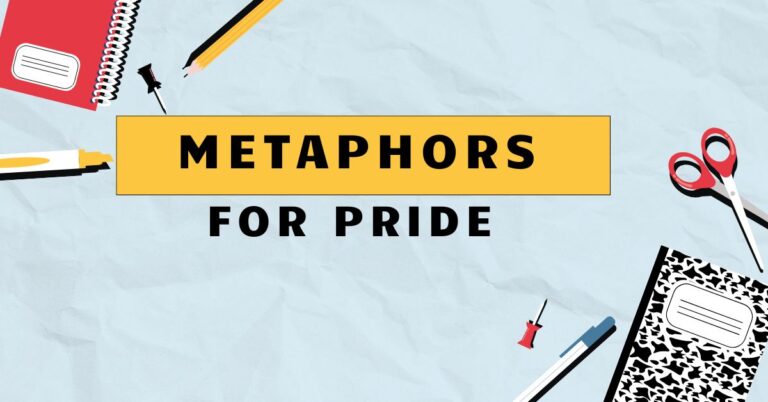23 Metaphors for Hot: Understanding Figurative Language
Metaphors are powerful tools in the English language, allowing us to express concepts in vivid and imaginative ways. When it comes to describing temperature, particularly the sensation of “hot,” metaphors provide a rich tapestry of expressions beyond the literal.
Understanding these metaphors enhances comprehension, adds flair to writing, and allows for more nuanced communication. This article explores various metaphors for “hot,” dissecting their meanings, usage, and providing ample examples to solidify your understanding.
Whether you’re an English language learner, a student, or simply someone looking to enrich their vocabulary, this guide will equip you with the knowledge to effectively use and interpret metaphors for “hot.”
Table of Contents
- Introduction
- Definition of Metaphor
- Structural Breakdown of Metaphors for Hot
- Types and Categories of Metaphors for Hot
- Examples of Metaphors for Hot
- Usage Rules for Metaphors
- Common Mistakes with Metaphors
- Practice Exercises
- Advanced Topics in Metaphorical Language
- Frequently Asked Questions
- Conclusion
Definition of Metaphor
Ametaphoris a figure of speech that directly compares two unrelated things. Unlike similes, which use “like” or “as” to make a comparison, metaphors state that one thingisanother.
This creates a vivid image and adds depth to the meaning. The function of a metaphor is to enhance understanding and create imagery by associating the characteristics of one thing with another.
Metaphors are used extensively in literature, poetry, everyday conversation, and persuasive writing to make ideas more impactful and memorable. They allow us to perceive connections between seemingly disparate concepts, enriching our understanding of the world.
In the context of describing “hot,” metaphors go beyond simply stating the temperature. They evoke the feeling, intensity, and associated sensory experiences of heat.
For instance, saying “the sun was a furnace” is more evocative than simply saying “the sun was hot.” The metaphor brings to mind the intense heat and enclosed nature of a furnace, providing a more powerful and descriptive image. Metaphors for “hot” can be classified based on the source domain (the thing used to describe heat) and the target domain (the concept of heat itself).
These source domains can include fire, the sun, emotions, and even actions.
Structural Breakdown of Metaphors for Hot
The structure of a metaphor involves two key elements: thetenorand thevehicle. The tenor is the subject being described (in this case, “hot”), and the vehicle is the object or concept used to describe the tenor.
Understanding this structure helps in analyzing and creating effective metaphors. The connection between the tenor and vehicle is based on shared characteristics or associations.
For example, in the metaphor “the desert was a furnace,” the tenor is the desert’s heat, and the vehicle is “furnace.” The shared characteristic is intense heat. The effectiveness of a metaphor depends on the reader’s or listener’s ability to recognize the connection between the tenor and the vehicle.
A well-chosen vehicle provides a richer and more nuanced understanding of the tenor. The context in which the metaphor is used also plays a crucial role in its interpretation.
Another structural element to consider is theground, which refers to the shared properties or common associations between the tenor and the vehicle that make the metaphor meaningful. In the example above, the ground is the intense, dry heat associated with both a desert and a furnace.
Identifying the ground helps to clarify the meaning and purpose of the metaphor.
Types and Categories of Metaphors for Hot
Metaphors for “hot” can be categorized based on the type of imagery they evoke and the specific connotations they carry. Here are some common categories:
Fiery and Burning Metaphors
These metaphors use imagery of fire and burning to convey extreme heat. They often imply danger, intensity, and rapid consumption.
Examples include “the sun was a blazing inferno” or “the oven was a fiery pit.” These metaphors are particularly effective in emphasizing the destructive potential of extreme heat and its overwhelming nature.
Intense and Blazing Heat Metaphors
This category focuses on the sheer intensity of the heat, often using words like “blazing,” “scorching,” and “searing.” These metaphors emphasize the overwhelming and sometimes unbearable nature of the heat. For instance, “the sand was scorching my feet” or “a blazing sun beat down on the city.” These metaphors often highlight the physical discomfort and potential harm caused by the heat.
Passionate and Emotional Hot Metaphors
These metaphors link heat with strong emotions like passion, anger, or desire. They often use terms like “burning desire,” “fiery temper,” or “hot-blooded.” These metaphors illustrate the intensity and consuming nature of these emotions, drawing a parallel to the physical sensation of heat.
They are commonly used in literature and everyday conversation to describe emotional states.
Energetic and Active Hot Metaphors
This type of metaphor connects heat with energy, activity, and excitement. Examples might include “the dance floor was hot” or “the competition was heating up.” These metaphors imply a high level of activity, intensity, and engagement, often associated with positive experiences.
They suggest that the environment or situation is dynamic and full of energy.
Descriptive and Sensory Hot Metaphors
These metaphors use sensory details to describe the feeling of heat, often focusing on its effects on the body or environment. Examples include “the air was thick enough to chew” or “the pavement shimmered with heat.” These metaphors create a vivid sensory experience, allowing the reader or listener to imagine and feel the heat more intensely.
They often appeal to multiple senses, such as sight and touch.
Examples of Metaphors for Hot
Here are some specific examples of metaphors for “hot,” categorized for clarity:
Weather-Related Examples
The following table provides examples of metaphors describing hot weather conditions.
| Metaphor | Explanation |
|---|---|
| The sun was a molten coin in the sky. | Compares the sun to molten metal, emphasizing its intense heat and brightness. |
| The air hung like a hot, wet blanket. | Describes the oppressive and heavy feeling of humid heat. |
| The desert was a furnace. | Highlights the intense, dry heat of the desert. |
| The day was a simmering pot of heat. | Suggests a slow, building intensity of heat. |
| Summer was a fiery dragon breathing down our necks. | Personifies summer as a dragon, emphasizing its powerful and overwhelming heat. |
| The heat was a tangible presence, pressing down on us. | Treats the heat as if it were a physical force, emphasizing its oppressive nature. |
| The sun was a blacksmith’s forge, hammering down heat. | Compares the sun to a forge, highlighting the intense and forceful nature of the heat. |
| The asphalt was a griddle, baking in the sun. | Suggests the asphalt is heating up like a cooking surface. |
| The heat was a suffocating blanket. | Implies the heat is overwhelming and difficult to bear. |
| The weather was a pressure cooker, about to explode. | Suggests the heat is building to an unbearable level. |
| The sun was an angry eye glaring down on us. | Personifies the sun with an angry gaze, emphasizing its intense heat. |
| The sky was a brassy dome, radiating heat. | Describes the sky as a metal dome, highlighting its heat-reflective qualities. |
| The air was thick with heat, like a soup. | Compares the air to a thick soup, emphasizing its density and heat. |
| The heat was a physical weight, dragging us down. | Treats the heat as a physical burden, emphasizing its draining effect. |
| The day was a furnace door left ajar. | Suggests the day is releasing intense heat like a furnace. |
| The sun was a magnifying glass focusing on the earth. | Implies the sun is concentrating its heat, intensifying its effect. |
| The heat was a palpable wave washing over us. | Treats the heat as a physical wave, emphasizing its overwhelming sensation. |
| The air was a hot breath on our skin. | Compares the air to hot breath, emphasizing its direct and intense effect. |
| The day was a fiery oven, baking everything inside. | Suggests the day is heating up like an oven, cooking everything within it. |
| The sun was a spotlight, roasting the earth below. | Implies the sun is intensely focused, causing extreme heat. |
| The air was an invisible fire. | Highlights the air’s intense heat, comparing it to a fire that cannot be seen. |
| The heat was a physical barrier. | Emphasizes how the heat impedes movement and activity. |
| The sky was a scorching lid. | Describes the sky as a covering that intensifies the heat. |
| The sun was a burning brand. | Compares the sun to a hot, searing object. |
Emotion-Related Examples
The following table provides examples of metaphors using heat to describe intense emotions.
| Metaphor | Explanation |
|---|---|
| Her anger was a burning fire. | Compares anger to a destructive fire, emphasizing its intensity. |
| His passion was a hot flame. | Suggests intense desire and enthusiasm. |
| Their love was a simmering heat. | Implies a deep, underlying passion that is always present. |
| The argument was heating up. | Suggests the argument is becoming more intense and heated. |
| She had a fiery temper. | Describes a person who gets angry easily and intensely. |
| His jealousy was a slow burn. | Suggests a lingering and destructive jealousy. |
| The tension in the room was palpable, a hot, heavy weight. | Describes tension as a physical force, emphasizing its oppressive nature. |
| Her words were like burning coals, searing his heart. | Compares words to hot coals, emphasizing their painful impact. |
| His rage was a volcanic eruption. | Suggests a sudden and explosive outburst of anger. |
| Their excitement was a fever pitch. | Implies a high level of enthusiasm and anticipation. |
| She felt a burning desire to succeed. | Emphasizes the intensity of her ambition. |
| His heart burned with resentment. | Suggests a deep and consuming bitterness. |
| The competition was a hotbed of rivalry. | Implies the competition is intense and filled with conflict. |
| Her enthusiasm was infectious, a warm glow. | Compares enthusiasm to warmth, emphasizing its positive and spreading effect. |
| His frustration was a slow simmer. | Suggests a building and underlying sense of annoyance. |
| Their passion ignited a firestorm of creativity. | Implies their passion sparked a burst of intense creative activity. |
| She had a burning ambition to change the world. | Emphasizes the intensity of her desire to make a difference. |
| His anger flared up like a sudden flame. | Suggests a brief but intense outburst of anger. |
| The pressure was building, a hot weight on his shoulders. | Describes pressure as a physical burden, emphasizing its oppressive nature. |
| Their relationship was a hot mess. | Implies their relationship is chaotic and filled with drama. |
| Her excitement bubbled like a simmering pot. | Suggests a growing and eager anticipation. |
| His determination was a burning ember. | Implies a persistent and unwavering resolve. |
| The atmosphere was charged, a hot current running through the crowd. | Describes the atmosphere as energized and intense. |
Food-Related Examples
The following table provides examples of metaphors describing hot food or drinks.
| Metaphor | Explanation |
|---|---|
| The soup was lava in a bowl. | Compares the soup to molten lava, emphasizing its extreme heat. |
| The coffee was a burning elixir. | Suggests the coffee is intensely hot and invigorating. |
| The spices gave the dish a fiery kick. | Implies the spices add intense heat and flavor. |
| The chili was a volcanic eruption in my mouth. | Suggests the chili is extremely spicy and intense. |
| The sauce was a hot, tangy kiss. | Describes the sauce as both spicy and flavorful. |
| The tea was a warm embrace on a cold day. | Compares the tea to a comforting and soothing experience. |
| The curry was a fiery inferno. | Suggests the curry is extremely spicy and intense. |
| The dish was a hot symphony of flavors. | Implies the dish is complex and filled with intense tastes. |
| The soup was a comforting warmth spreading through me. | Compares the soup to a soothing and comforting sensation. |
| The pizza was a molten masterpiece. | Suggests the pizza is perfectly cooked and delicious. |
| The coffee was a jolt of liquid fire. | Implies the coffee is extremely strong and energizing. |
| The salsa was a fiery dance on my tongue. | Describes the salsa as both spicy and flavorful. |
| The stew was a bubbling cauldron of goodness. | Suggests the stew is rich, flavorful, and comforting. |
| The spices were a hot explosion of flavor. | Implies the spices add intense and exciting tastes. |
| The broth was a soothing warmth. | Compares the broth to a comforting and calming sensation. |
| The hot sauce was liquid courage. | Suggests the hot sauce is empowering and bold. |
| The soup was a steaming hug in a bowl. | Compares the soup to a comforting and embracing experience. |
| The chili was a fiery challenge. | Implies the chili is extremely spicy and difficult to eat. |
| The coffee was a wake-up call in a mug. | Suggests the coffee is extremely stimulating and energizing. |
| The dish was a melting pot of flavors. | Implies the dish is a blend of various intense tastes. |
| The tea was a gentle warmth spreading through my body. | Compares the tea to a soothing and relaxing sensation. |
Activity-Related Examples
The following table provides examples of metaphors describing hot activities or situations.
| Metaphor | Explanation |
|---|---|
| The competition was heating up. | Suggests the competition is becoming more intense and fierce. |
| The dance floor was on fire. | Implies the dancing is energetic and exciting. |
| The debate was a hot topic. | Suggests the debate is controversial and intensely discussed. |
| The market was a hotbed of activity. | Implies the market is bustling and filled with energy. |
| The investigation was a hot potato. | Suggests the investigation is sensitive and difficult to handle. |
| His career was on a hot streak. | Implies he is experiencing a period of great success. |
| The negotiations were a fiery battle. | Suggests the negotiations were intense and confrontational. |
| The project was a hot mess. | Implies the project is chaotic and disorganized. |
| The game was a heated rivalry. | Suggests the game is intense and filled with competition. |
| The situation was a boiling point. | Implies the situation is reaching a critical and potentially dangerous stage. |
| The political climate was scorching. | Suggests the political environment is tense and volatile. |
| The issue was a burning question. | Implies the issue is urgent and demands immediate attention. |
| The event was a hot ticket. | Suggests the event is highly popular and in demand. |
| The rumor was spreading like wildfire. | Implies the rumor is spreading quickly and uncontrollably. |
| The performance was a blazing success. | Suggests the performance was extremely successful and impressive. |
| The economy was overheating. | Implies the economy is growing too rapidly and unsustainably. |
| The discussion was a heated exchange. | Suggests the discussion was intense and filled with disagreement. |
| The investigation was a hot pursuit. | Implies the investigation is being conducted with great intensity and urgency. |
General Examples
The following table provides general examples of metaphors using heat.
| Metaphor | Explanation |
|---|---|
| The truth was a burning light. | Suggests the truth is illuminating and reveals everything. |
| Her words were a warm embrace. | Implies her words were comforting and supportive. |
| His spirit was a burning flame. | Suggests he has a strong and unwavering passion. |
| The atmosphere was electric, a hot current running through the room. | Describes the atmosphere as energized and intense. |
| Her laughter was a warm, sunny day. | Compares her laughter to a pleasant and cheerful experience. |
| His ideas were a hotbed of innovation. | Implies his ideas are creative and generate new possibilities. |
| The city was a melting pot of cultures. | Suggests the city is a blend of diverse cultures and traditions. |
| Her advice was a warm blanket on a cold night. | Compares her advice to a comforting and reassuring experience. |
| His enthusiasm was infectious, a warm glow. | Compares his enthusiasm to warmth, emphasizing its positive and spreading effect. |
| The memory was a burning brand in her mind. | Implies the memory is vivid and unforgettable. |
| Her smile was a warm ray of sunshine. | Compares her smile to a cheerful and uplifting experience. |
Usage Rules for Metaphors
Using metaphors effectively requires understanding certain rules and guidelines.Clarityis paramount; the metaphor should be understandable and relevant to the context. Avoid mixed metaphors, which combine unrelated images and create confusion.
For example, “He’s burning the candle at both ends and sailing close to the wind” is a mixed metaphor because it combines the image of burning a candle with the image of sailing a boat.
Originalitycan make a metaphor more impactful, but avoid being too obscure. The connection between the tenor and vehicle should be clear enough for the audience to grasp.Appropriatenessis also crucial; the metaphor should be suitable for the tone and purpose of the writing or speech.
Overusing metaphors can also diminish their impact, so use them judiciously.
Consider your audience when choosing metaphors. What might resonate with one group might not work for another.
Cultural background, age, and level of understanding can all influence how a metaphor is perceived. Always aim for metaphors that enhance understanding and create a vivid image without causing confusion or distraction.
Common Mistakes with Metaphors
One common mistake is usingclichéd metaphors, which are overused and lack originality. Examples include “hot as hell” or “burning desire” (though these are valid, they are less impactful due to overuse).
These metaphors have lost their impact because they have been used so frequently. Strive to create fresh and original comparisons.
Another mistake is using mixed metaphors, which combine unrelated images and create confusion. For example:
| Incorrect | Correct |
|---|---|
| He was a wolf in sheep’s clothing, but he couldn’t hold water. | He was a wolf in sheep’s clothing. (or) He couldn’t hold water. |
Inappropriate metaphorscan also be problematic. A metaphor that is too complex or obscure for the audience will fail to communicate effectively.
Make sure the comparison is clear and relevant.
Overuseis another common pitfall. Too many metaphors in a short space can overwhelm the reader and detract from the overall message.
Use metaphors sparingly and strategically to maximize their impact.
Practice Exercises
Test your understanding of metaphors for “hot” with these exercises:
| Question | Answer |
|---|---|
| 1. Which of the following is a metaphor for extreme heat: a) The sun was bright. b) The sun was a furnace. c) The sun was shining. | b) The sun was a furnace. |
| 2. Rewrite the sentence using a metaphor: “The competition was very intense.” | The competition was a blazing battleground. (Example) |
| 3. Identify the tenor and vehicle in the metaphor: “Her anger was a burning fire.” | Tenor: Anger; Vehicle: Burning fire. |
| 4. Which of the following is NOT a metaphor for hot weather: a) The air was thick enough to chew. b) The sky was blue. c) The desert was a furnace. | b) The sky was blue. |
| 5. Complete the metaphor: “His passion was a ______ flame.” | burning (Example) |
| 6. Is the following sentence a metaphor? “The coffee was as hot as the sun.” (Yes/No) | No (This is a simile). |
| 7. Create a metaphor for a hot day at the beach. | The beach was a sprawling oven. (Example) |
| 8. What type of metaphor is “The debate was a hot topic”? | Energetic/Active (Example) |
| 9. Replace the underlined word with a metaphor: “The food was very spicy.” | The food was a fiery explosion. (Example) |
| 10. Explain the meaning of the metaphor: “The economy was overheating.” | The economy was growing too rapidly and unsustainably. |
More Practice:
| Question | Answer |
|---|---|
| 1. The sun was a _________ in the sky, scorching everything below. | Magnifying glass (Example) |
| 2. Her rage was a _________, consuming everything in its path. | Wildfire (Example) |
| 3. The music was _________, making everyone want to dance. | Electric (Example) |
| 4. The tension in the room was a _________, ready to explode. | Pressure cooker (Example) |
| 5. His words were _________, leaving a lasting impact. | Burning coals (Example) |
| 6. The competition was _________, pushing everyone to their limits. | Fierce (Example) |
| 7. The atmosphere was _________, charged with excitement. | Buzzing (Example) |
| 8. The challenge was _________, demanding all our attention. | Scorching (Example) |
| 9. Her passion was _________, driving her to achieve her goals. | Unstoppable (Example) |
| 10. The situation was _________, requiring immediate action. | Critical (Example) |
Advanced Topics in Metaphorical Language
For advanced learners, exploring the cognitive aspects of metaphors can be insightful. Conceptual metaphor theory, developed by George Lakoff and Mark Johnson, suggests that metaphors are not just linguistic devices but fundamental to how we think and understand the world. For example, the metaphor “ARGUMENT IS WAR” shapes how we perceive and engage in arguments.
Analyzing metaphors in various contexts, such as literature, politics, and advertising, can reveal deeper cultural and ideological meanings. Understanding the historical and social context of a metaphor can also shed light on its significance.
Exploring the use of extended metaphors, where a single metaphor is developed and elaborated throughout a text, can enhance analytical skills.
Additionally, consider the role of metaphors in shaping our understanding of abstract concepts. For example, metaphors are often used to explain complex scientific theories or philosophical ideas.
Analyzing these metaphors can reveal the underlying assumptions and biases that influence our understanding.
Frequently Asked Questions
- What is the difference between a metaphor and a simile?
A metaphor directly equates two things, while a simile uses “like” or “as” to make a comparison. For example, “The sun was a furnace” is a metaphor, while “The sun was as hot as a furnace” is a simile. Similes are generally more explicit and less forceful than metaphors.
- How can I avoid using clichéd metaphors?
Strive for originality by thinking of fresh and unexpected comparisons. Consider the specific qualities you want to emphasize and brainstorm images that capture those qualities in a unique way. Read widely and pay attention to how other writers use metaphors effectively.
- What should I do if I accidentally use a mixed metaphor?
Identify the conflicting images and revise the sentence to create a coherent comparison. Choose one dominant image and eliminate the others, or rephrase the sentence to avoid using a metaphor altogether.
- How important is context when interpreting a metaphor?
Context is crucial. The meaning of a metaphor can vary depending on the surrounding words, the overall tone of the text, and the cultural background of the audience. Consider the context carefully to ensure you understand the intended meaning.
- Can a metaphor be too obscure?
Yes. If the connection between the tenor and vehicle is too distant or abstract, the metaphor may be difficult for the audience to understand. Aim for metaphors that are creative but still accessible.
- Are metaphors only used in literature and poetry?
No. Metaphors are used extensively in everyday conversation, journalism, persuasive writing, and even scientific discourse. They are a fundamental part of how we communicate and understand the world.
- How can I improve my ability to create effective metaphors?
Practice regularly, read widely, and pay attention to the metaphors used by others. Experiment with different comparisons and ask for feedback on your writing. The more you practice, the better you will become at creating vivid and impactful metaphors.
- What is the role of cultural background in understanding metaphors?
Cultural background can significantly influence how a metaphor is perceived. Some metaphors may be specific to certain cultures or regions, and their meaning may not be immediately apparent to someone from a different background. Be mindful of cultural differences when using and interpreting metaphors.
- How do metaphors contribute to persuasive writing?
Metaphors can make arguments more compelling by creating vivid images and emotional connections. They can also simplify complex ideas and make them more accessible to the audience. A well-chosen metaphor can be a powerful tool for persuasion.
- Can metaphors be used in visual communication?
Yes, metaphors can be expressed visually through images, symbols, and design elements. Visual metaphors can be particularly effective in advertising and marketing, where they can convey complex messages quickly and memorably.
Conclusion
Mastering metaphors for “hot” enhances your ability to express yourself with precision and creativity. By understanding the structural elements, types, and usage rules of metaphors, you can create vivid and impactful language.
Remember to avoid clichés, mixed metaphors, and overuse, and always consider your audience and context. Practicing regularly and analyzing the metaphors used by others will further refine your skills.
Metaphors are more than just figures of speech; they are powerful tools for understanding and shaping our perception of the world. So, embrace the heat and let your language ignite!

